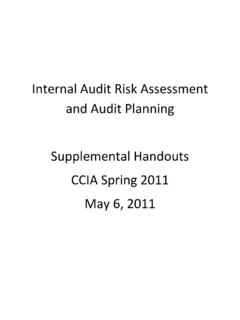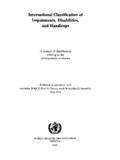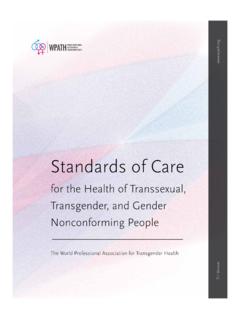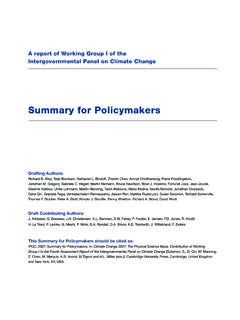Transcription of Internal Audit Risk Assessment and Audit Planning ...
1 Internal Audit Risk Assessment and Audit Planning supplemental handouts CCIA spring 2011 May 6, 2011 The Institute of Internal AuditorsPRINTCLOSE Interactive IPPFU pdated as of March 15, 2011 The Institute of Internal Auditors 247 Maitland Avenue, Altamonte Springs Florida, 32701 Tel. 1+407-937-1100, Fax. 1+407-937-1101 Web: , Email: 1 of 1 The Institute of Internal Auditors4/12/2011 Institute of Internal AuditorsPRINTCLOSE Interactive IPPFU pdated as of March 15, 2011 The Institute of Internal Auditors 247 Maitland Avenue, Altamonte Springs Florida, 32701 Tel. 1+407-937-1100, Fax. 1+407-937-1101 Web: , Email: 1 of 1 The Institute of Internal Auditors4/12/2011 : January 2009 PA 2010-1 Revised: Page 1 of 2 2009 The Institute of Internal Auditors Practice Advisory 2010-1: Linking the Audit Plan to Risk and Exposures Primary Related Standard 2010 Planning The chief Audit executive must establish risk-based plans to determine the priorities of the Internal Audit activity, consistent with the organization s goals.
2 Interpretation: The chief Audit executive is responsible for developing a risk-based plan. The chief Audit executive takes into account the organization s risk management framework, including using risk tolerance levels set by management for the different activities or parts of the organization. If a framework does not exist, the chief Audit executive uses his/her own judgment of risks after consultation with senior management and the board. 1. In developing the Internal Audit activity s Audit plan, many chief Audit executives (CAEs) find it useful to first develop or update the Audit universe. The Audit universe is a list of all the possible audits that could be performed. The CAE may obtain input on the Audit universe from senior management and the board. 2. The Audit universe can include components from the organization s strategic plan.
3 By incorporating components of the organization s strategic plan, the Audit universe will consider and reflect the overall business objectives. Strategic plans also likely reflect the organization s attitude toward risk and the degree of difficulty to achieving planned objectives. The Audit universe will normally be influenced by the results of the risk management process. The organization s strategic plan considers the environment in which the organization operates. These same environmental factors would likely impact the Audit universe and Assessment of relative risk. 3. The CAE prepares the Internal Audit activity s Audit plan based on the Audit universe, input from senior management and the board, and an Assessment of risk and exposures affecting the organization. Key Audit objectives are usually to provide senior management and the board with assurance and information to help them accomplish the organization s objectives, including an Assessment of the effectiveness of management s risk management activities.
4 4. The Audit universe and related Audit plan are updated to reflect changes in management direction, objectives, emphasis, and focus. It is advisable to assess the Audit universe on at least an annual basis to reflect the most current strategies and direction of the organization. In some situations, Audit plans may need to be updated more frequently ( , quarterly) in response to changes in the organization s business, operations, programs, systems, and controls. Issued: January 2009 PA 2010-1 Revised: Page 2 of 2 2009 The Institute of Internal Auditors 5. Audit work schedules are based on, among other factors, an Assessment of risk and exposures. Prioritizing is needed to make decisions for applying resources. A variety of risk models exist to assist the CAE. Most risk models use risk factors such as impact, likelihood, materiality, asset liquidity, management competence, quality of and adherence to Internal controls, degree of change or stability, timing and results of last Audit engagement, complexity, and employee and government relations.
5 ** Issued: July 2009 PA 2010-2 Revised: Page 1 of 4 2009 The Institute of Internal Auditors Practice Advisory 2010-2: Using the Risk Management Process in Internal Audit Planning Primary Related Standard 2010 Planning The chief Audit executive must establish risk based plans to determine the priorities of the Internal Audit activity, consistent with the organization s goals. 1. Risk management is a critical part of providing sound governance that touches all the organization s activities. Many organizations are moving to adopt consistent and holistic risk management approaches that should, ideally, be fully integrated into the management of the organization. It applies at all levels enterprise, function, and business unit of the organization. Management typically uses a risk management framework to conduct the Assessment and document the Assessment results.
6 2. An effective risk management process can assist in identifying key controls related to significant inherent risks. Enterprise risk management (ERM) is a term in common use. The Committee of Sponsoring Organizations (COSO) of the Treadway Commission defines ERM as a process, effected by an entity s board of directors, management, and other personnel, applied in strategy setting and across the enterprise, designed to identify potential events that may affect the entity, and manage risk to be within its risk appetite, to provide reasonable assurance regarding the achievement of entity objectives. Implementation of controls is one common method management can use to manage risk within its risk appetite. Internal auditors Audit the key controls and provide assurance on the management of significant risks. 3. The IIA s International Standards for the Professional Practice of Internal Auditing (Standards) defines control as any action taken by management, the board, and other parties to manage risk and increase the likelihood that established objectives and goals will be achieved.
7 Management plans, organizes, and directs the performance of sufficient actions to provide reasonable assurance that objectives and goals will be achieved. 4. Two fundamental risk concepts are inherent risk and residual risk (also known as current risk). Financial/external auditors have long had a concept of inherent risk that can be summarized as the susceptibility of information or data to a material misstatement, assuming that there are no related mitigating controls. The Standards define residual risk as the risk remaining after management takes action to reduce the impact and likelihood of an adverse event, including control activities in responding to a risk. Current risk is often defined as the risk managed within existing controls or control systems. 5. Key controls can be defined as controls or groups of controls that help to reduce an otherwise unacceptable risk to a tolerable level.
8 Controls can be most readily conceived as organizational processes that exist to address risks. In an effective risk management process (with adequate documentation), the key controls can be readily identified from the difference between inherent and residual risk across all affected systems that are relied upon to reduce the rating of significant risks. If a rating has not been given to inherent risk, the Internal auditor estimates the inherent risk rating. When identifying key controls (and Issued: July 2009 PA 2010-2 Revised: Page 2 of 4 2009 The Institute of Internal Auditors assuming the Internal auditor has concluded that the risk management process is mature and reliable), the Internal auditor would look for: Individual risk factors where there is a significant reduction from inherent to residual risk (particularly if the inherent risk was very high).
9 This highlights controls that are important to the organization. Controls that serve to mitigate a large number of risks. 6. Internal Audit Planning needs to make use of the organizational risk management process, where one has been developed. In Planning an engagement, the Internal auditor considers the significant risks of the activity and the means by which management mitigates the risk to an acceptable level. The Internal auditor uses risk Assessment techniques in developing the Internal Audit activity s plan and in determining priorities for allocating Internal Audit resources. Risk Assessment is used to examine auditable units and select areas for review to include in the Internal Audit activity s plan that have the greatest risk exposure. 7. Internal auditors may not be qualified to review every risk category and the ERM process in the organization ( , Internal audits of workplace health and safety, environmental auditing, or complex financial instruments).
10 The chief Audit executive (CAE) ensures that Internal auditors with specialized expertise or external service providers are used appropriately. 8. Risk management processes and systems are set up differently throughout the world. The maturity level of the organization related to risk management varies among organizations. Where organizations have a centralized risk management activity, the role of this activity includes coordinating with management regarding its continuous review of the Internal control structure and updating the structure according to evolving risk appetites. The risk management processes in use in different parts of the world might have different logic, structures, and terminology. Internal auditors therefore make an Assessment of the organization s risk management process and determine what parts can be used in developing the Internal Audit activity s plan and what parts can be used for Planning individual Internal Audit assignments.










